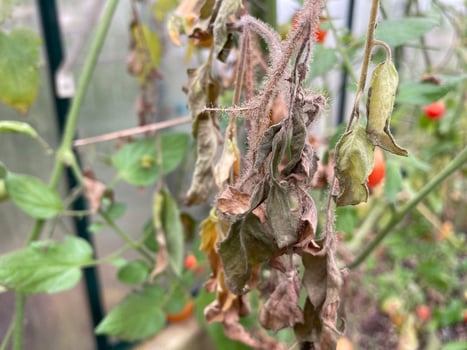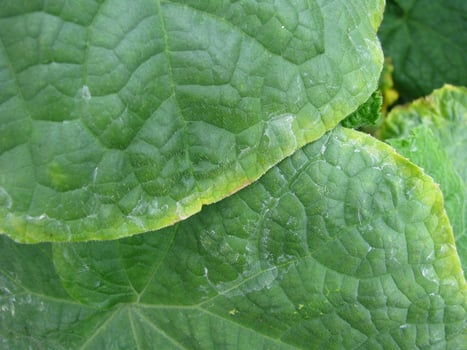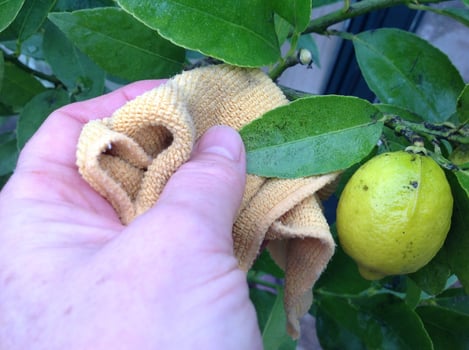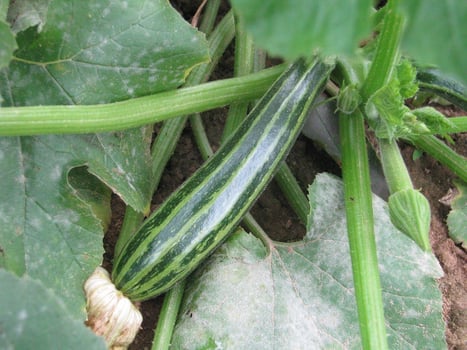Quick Answer:
Greenhouse mold and fungus problems can wreak havoc on your plants—especially in the cooler, damper months. Common culprits like grey mold (botrytis), fusarium, sooty mold, and powdery mildew thrive in stagnant air and excessive humidity. Fortunately, preventing outbreaks is possible with five key strategies: maximize sunlight exposure, ensure proper ventilation, monitor temperature and humidity, water conservatively in winter, and keep your greenhouse clean. From adjusting your watering schedule to changing out contaminated soil, these proactive steps can help you maintain a healthy, thriving greenhouse environment all year round.
Greenhouses are not one size fits all but in the late fall through spring many greenhouse growers report problems with fungus in their greenhouse. Climate control and cleanliness are important aspects of preventing fungal problems in a greenhouse because damp cool conditions encourage mold to thrive and spread.
Common Types of Mold Found in the Greenhouse
The main problem in a home greenhouse is grey mold, Fusarium, sooty mold and powdery mildew.
Grey Mold
Grey mold (botrytis cinerea) is one of the most common diseases found in greenhouses and gardens. It is mainly related to cool air combined with stagnant high humidity.
 Grey mold on tomatoes. Oops! These should have been removed before spores had a chance to spread
Grey mold on tomatoes. Oops! These should have been removed before spores had a chance to spread
Fusarium
This common fungus causes a lot of wilting and root rot in various plants including fruits, vegetables and ornamentals. Fusarium triggers wilting on cucumbers or tomato stems to turn brown.
 Fusarium can start as yellow leaf edges on cucumber progressing to entirely yellow leaves. If fusarium is in the roots it also causes cucumbers to wilt.
Fusarium can start as yellow leaf edges on cucumber progressing to entirely yellow leaves. If fusarium is in the roots it also causes cucumbers to wilt.
Sooty Mold (a common name for several genera)
This mold type is related to insect problems. When aphids and scale feed on plants they excrete sugary honeydew, but luckily this is just a superficial problem. Control the scale and aphids and you control the sooty mold.
 Sooty mold on lemon leaves, stems and lemons sits on the leaf surface. It is easily washed off with s soft cloth. It can be prevented by eliminating scale and aphids on lemons.
Sooty mold on lemon leaves, stems and lemons sits on the leaf surface. It is easily washed off with s soft cloth. It can be prevented by eliminating scale and aphids on lemons.
Powdery Mildew
Finally, powdery mildew, like grey mold, is related to cool fall and winter climates but could also relate to low or imbalanced micro-nutrients including zinc. Make sure to use only the highest quality fertilizers with micronutrients to prevent nutrient-triggered powdery mildew.
 Powdery mildew often looks like flour has been sprinkled on leaves. This is often when evening temperatures are markedly cooler than day temperatures and sometimes related to lack of micro-nutrients such as zinc. If in doubt, remove and discard dead or dying leaves as soon as you see signs of this mold and fertilize with a product that includes micro-nutrients.
Powdery mildew often looks like flour has been sprinkled on leaves. This is often when evening temperatures are markedly cooler than day temperatures and sometimes related to lack of micro-nutrients such as zinc. If in doubt, remove and discard dead or dying leaves as soon as you see signs of this mold and fertilize with a product that includes micro-nutrients.
Tips for Reducing and Preventing Mold in the Greenhouse
Here are some strategies for adapting your efforts in the greenhouse to reduce the worst of the four fungal problems, grey mold and fusarium.
1. Let the sun in
Remember to rake shade cloth off as soon as peak temperatures dip in late summer. Sun helps dry out plants and keep temperatures warm in the greenhouse. Warm dry growing conditions are unfavorable to grey mold growth.
2. Maintain proper ventilation
Ensure that your greenhouse is well-ventilated to allow for good airflow. This can help to reduce humidity levels and prevent fungal growth. All BC Greenhouse Builders greenhouses come with automatic roof vents (unless manual roof vents are requested by the customer) and this really sets them apart from cheaper greenhouses. Adding fans or other ventilation systems to achieve better airflow really helps keep air circulating and discourages mold spores from settling on damp leaves.
3. Monitor temperature and humidity levels
Regularly monitor the temperature and humidity levels in your greenhouse to ensure they are within the appropriate range for your plants. Avoid leaving water puddling or sitting on floors in winter. Extreme temperature and humidity fluctuations are more common in the late fall and winter greenhouse and the best way to change this is to use a heater and fans in the cool season.
4. Water plants appropriately
Over-watering can contribute to fungal growth and a secondary problem, fungus gnats, so ensure that you are watering your plants as little as possible in winter. Use a watering system that allows water to be delivered directly to the roots, if needed, and avoid getting water on the leaves and foliage. Remember that unless you are heating and adding supplemental light, greenhouse growth and water user is greatly diminished in winter. I water my potted lemons late in November and then not again until late February because I allow my lemon and lime pots to dry out completely in between waterings in winter.
5. Keep the greenhouse clean
According to Greenhouse Canada, a commercial growers magazine, "All infected sporulating tissues are a source of invisible 'spore clouds' that are efficiently spread throughout the greenhouse by any air movements, particularly during workers' activities. A thorough cleanup at the end of the crop cycle is also necessary because B. cinerea produces survival structures called sclerotia that can live up to about 20 years in dried plant material."
Home gardener greenhouse cleaning
Botrytis thrives in a dirty greenhouse, including all surfaces, pots, and tools. To prevent the buildup of fungal spores keep your space clean and free from plant material. Home gardeners rarely rely on sprays and fungicides. Instead, we clean and wash with soapy water every fall and remove all dead plants and their materials as we garden. If you see brown stems on tomatoes or "fuzzy" fruits in fall or winter, remove them at once.
 Grey mold coating my poor tomato plant. These were promptly removed from the greenhouse to keep all my other plants thriving.
Grey mold coating my poor tomato plant. These were promptly removed from the greenhouse to keep all my other plants thriving.
I have stopped growing cucumbers in my greenhouse soil and only grow them in their own pots with fresh soil every season. This is because I had fusarium once and it was too sad to lose a whole crop due to tiny spores left in the soil. Now I change out soil in pots annually for success with cucumbers.
Conclusion
The worst types of mold and fungus found in a greenhouse are botrytis and fusarium. These can cause damage to plants and reduce yield. By implementing effective climate control measures, cleaning as you go and taking steps to prevent fungal growth, you can reduce the risk of these and other fungal problems in your greenhouse.
More from Donna
 For more great tips from Donna, visit www.donnabalzer.com. You can also read Donna's gardening books: "No Gruff Vegetable Gardening with Steven Biggs" and keep track of your success with her "Gardener's Gratitude Journal: Part Diary, Part Personal Growing Guide".
For more great tips from Donna, visit www.donnabalzer.com. You can also read Donna's gardening books: "No Gruff Vegetable Gardening with Steven Biggs" and keep track of your success with her "Gardener's Gratitude Journal: Part Diary, Part Personal Growing Guide".



